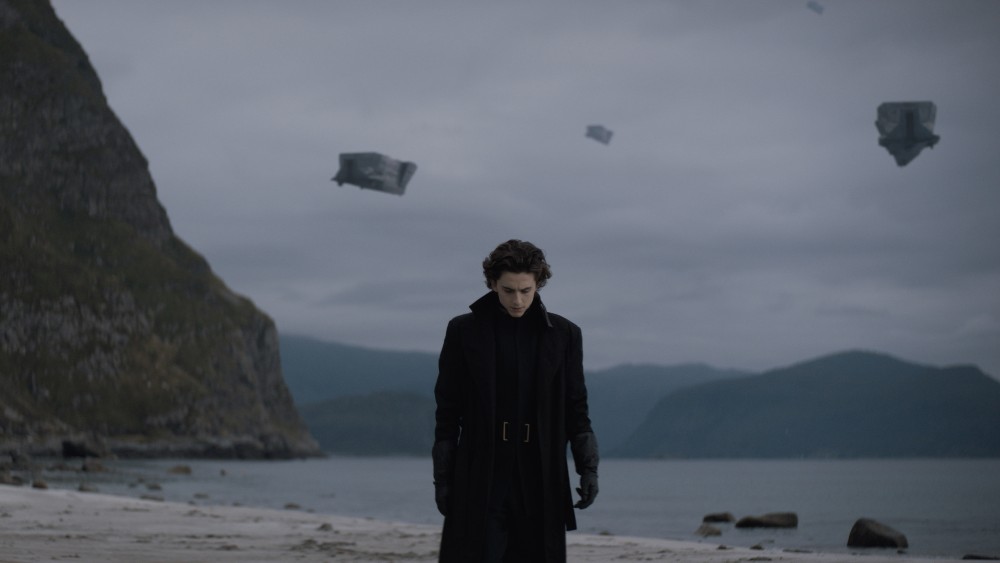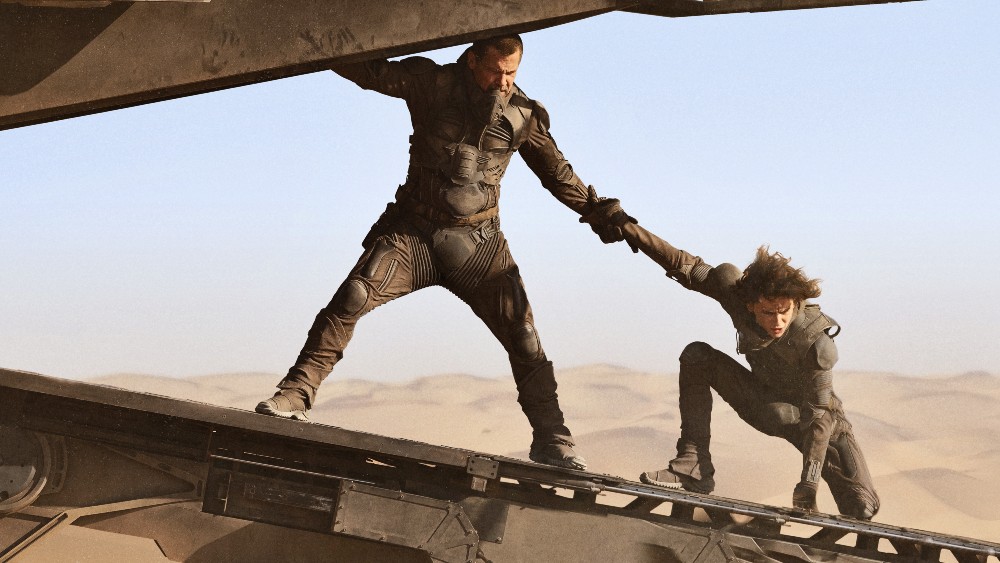
Adapted from Frank Herbert‘s science-fiction novel, Dune sets in motion an intergalactic war that will determine the fates of several planets. Featuring an all-star cast, the movie has dominated box-offices to the extent that a sequel has already been announced.
Director and co-writer Denis Villenueve first worked with editor Joe Walker on the 2015 film Sicario. They have since collaborated on Arrival and Blade Runner 2049. Walker has also forged a creative partnership with director Steve McQueen on films like Hunger, Shame, and 12 Years a Slave. He has received numerous Oscar, BAFTA, and ACE Eddie nominations. A native of Britain, he now resides in Los Angeles.
Below the Line spoke with Walker via Google Meet.
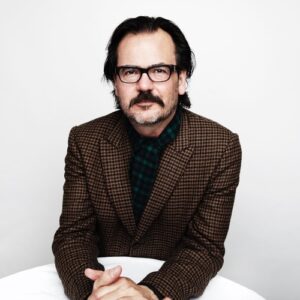
Below the Line: When did you start working on Dune?
Joe Walker: I spend a lot of time less than five feet away from Denis. I have done so for the last six years, I suppose. I think I first heard about Dune during Arrival, then I really felt that the foot was on the pedal during Blade Runner 2049. He recommended that I read the book, that was long before I got a script. I guess my first reaction was if we had worried about what the fans think of trampling on the carpets of Blade Runner, I can only just imagine what they’re going to feel when they see what we do to a sacred tome from the mid-sixties. Denis said to me, “Yes, they’re going to bring their baseball bats.”
BTL: How closely does the final film match the script?
Walker: The script is a blueprint. It gets the project funded, organized. It’s kind of a set of instructions, but it isn’t the finished product. Actors bring their own ingredients, directors are chopping and changing all the time.
We got used to that on Arrival, that the editing room was in some ways a documentary cutting room. Denis would gather as many materials as he can to give us the freedom to reconfigure and perfect in the cutting room. I’d say the two biggest things that changed were the opening and Paul’s [Timothée Chalamet] dream visions. These were things that in the script were pretty nebulous.
BTL: In Arrival, you had to fashion a narrative and build suspense without being allowed to show very much.
Walker: I felt many times working on Dune that it was a partner piece with Arrival in terms of editing. It’s funny, isn’t it, that Arrival and Blade Runner 2049 and Dune are all based to some extent on privileged information from inside the heads of the protagonists? The key thing I learned from Arrival is that if you aren’t restlessly inventive with a formula — like the flashes we see from inside the mind of the Amy Adams character Louise — it’s boring.
In Dune, where you’re talking about prophecy, if you just see something that’s going to happen, and then you see it play out, then we’re dead. The key ingredient in both Arrival and Dune was to try and give a narrative arc to those interventions, to feel that they were pointing towards the future in a symbolic way. You know, is a death a real death, or is it a doorway into another state of identity?
In Arrival, we did a lot to develop the flashes from their beginnings as mute images of an out-of-focus horse being viewed by an unspecified person, climbing all the way to the end of the film where the sound and images have equal status. The future is perceived by Louise to the same accuracy as the present day. It took a while for us to figure out how to do that.
BTL: One problem with Dune is that you have to balance revealing and hiding information at the same time. There’s so much exposition, but you can’t tip off twists and villains.
Walker: That takes place on a very small level also, even within one shot. For example, you want to sense that the worm is coming long before you see it. Editing with Denis is sometimes like a little strip tease. You know, show just a tiny bit of ankle, narratively speaking.
That really affects the timing. Often, while cutting a sequence, just holding on something, knowing that something’s going to arrive, is very powerful. I can think of two occasions in the film where we actually do that with a worm. When you’re looking at material for 20 months, which we did because of the pandemic, it’s quite hard to hold onto those shot lengths, to keep the faith, long before you have the VFX. I would use every trick in the book. Certainly, I would get sound teams working away like mad.
We were always thinking of the architecture of Dune, trying to kind of create better ways of expressing it. For example, we meet the Sardaukar, the elite fighting guard of the emperor, relatively late.
We felt that we needed to cast a shadow over the first half of the film, to give the sense that the planet Caladan has a dark shadow cast upon it. One way of achieving that is [to] just start with this incredible voice, “Dreams are messages from the deep,” over black. That sound came from Hans Zimmer. He recorded an amazing singer, Michael Geiger, and gave us all this material. It’s quite unusual because we use it before the logos.
BTL: Are you working while they are shooting?
Walker: Normally, I come on a couple of weeks earlier than the shoot to help set up templates for set pieces. A good example is the first time they go out into the desert. You have Liet Kynes [Sharon Duncan-Brewster], Duke Leto [Oliver Isaac] and Paul Atreides in an ornithopter. They witness a worm attacking a spice harvester. It’s a scene with a large amount of VFX. Pre-vizes are incredibly creative documents, but they aren’t necessarily paced. They can be a bit robotic. So I’m there to inject a sense of time into the scene.
That was a scene that needed a lot of work because it then became the template for the main unit, the second unit, and eventually the aerial unit who shot the plates in Abu Dhabi. When they went into principal photography, I was working beside them in Budapest, looking at dailies in the morning and cutting in the afternoon.
BTL: Do you ever suggest coverage?
Walker: Denis is in no need of my help. You know, there is a danger that on pretty much every film set, everybody wants to be the director. I’ve learned that when you’re working with somebody who’s that good, it’s like, “Down boy, relax.” Occasionally, I will go to him, normally I’d show him a cut, and we’d talk it over from there.
BTL: Usually the score is one of the last elements finished.
Walker: Hans [Zimmer] is so passionate about this film, I think he’s still writing the score! He was cooking things in his own laboratory, kind of filling Petri dishes from the moment Denis asked him to join up. It’s a favorite book of his, and he’s been waiting to work on it for fifty years. He does this incredible thing of building instruments, whether they are real physical objects with a sound sculptor he works with, or virtual instruments. There was a monumental recording and editing period with vocalists to make playable instruments.
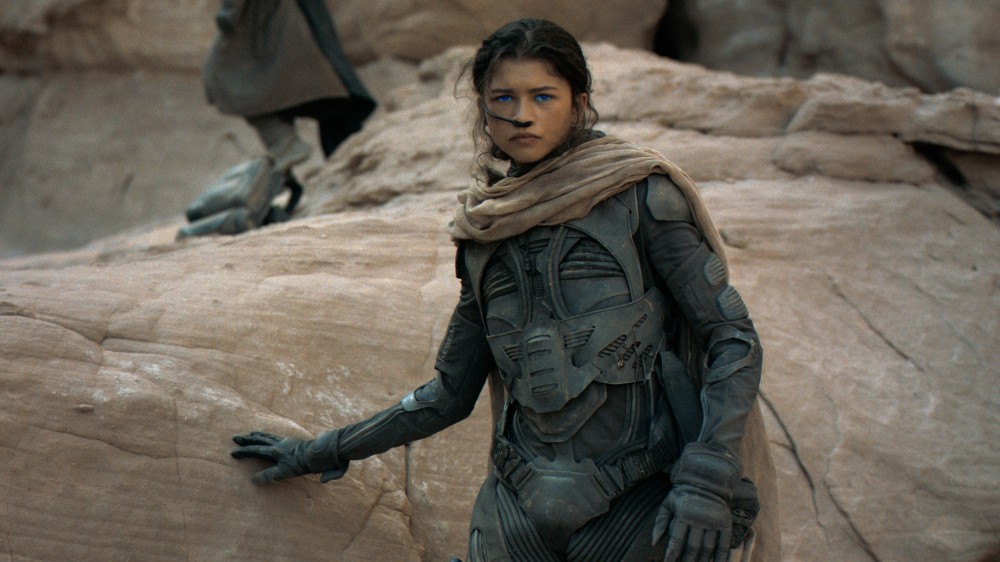
BTL: How soon are you working with sound?
Walker: My background is originally in composing, and then I was a sound editor for a while. The big thing for me on this film was to create as musical a rhythm as we could. We were lucky enough to have a sound editor on the shoot, because you can’t find these sounds anywhere. There are no sand worm effects, no ornithopter effects. They all have to be unique, and they all have to be designed.
BTL: It seems like each department had the opportunity to work organically.
Walker: Yes, and I see my role as being the still center of that turning world. I’ve got my own editorial team to manage. We’re so used to working with each other that we can experience blasts of creativity. For example, we were experimenting early in the director’s cut with the opening. Different openings, voiceovers, temp things. I’m basically on an intercom bothering my team all day long. We’re hurling things into the cut trying to make things work, sometimes in a very low-fi way.
BTL: How does the IMAX format affect your editing?
Walker: First of all, you need to know that Denis and [Cinematographer] Greig Fraser, shot a lot in native IMAX. For example, the whole of reel eight is IMAX. We initially cut the film in full height IMAX. There were only maybe a dozen shots which we reframed or resized, such as an ornithopter landing.
I was quite nervous going between formats, from the 4:3 IMAX to 2.39, whether going sharply between the different aspect ratios would be distracting. When we viewed it on a large screen, it allayed our fears because a lot of that movement is peripheral. It’s not such a big issue.
BTL: How often do you have to manipulate the footage?
Walker: I think it’s in the armory of what editors do nowadays. Back in the day, when I was working on film, then you just cut what they gave you. Nowadays, you can master the rhythm, a kind of interplay of sound and editing and performance. Sometimes you need to spread a moment or tighten a moment. You can do that by dividing the shot, especially at 2.39. Stitch two sides of a shot to compress time. We do that, but I’m always trying to be as respectful as I can of the original performance.
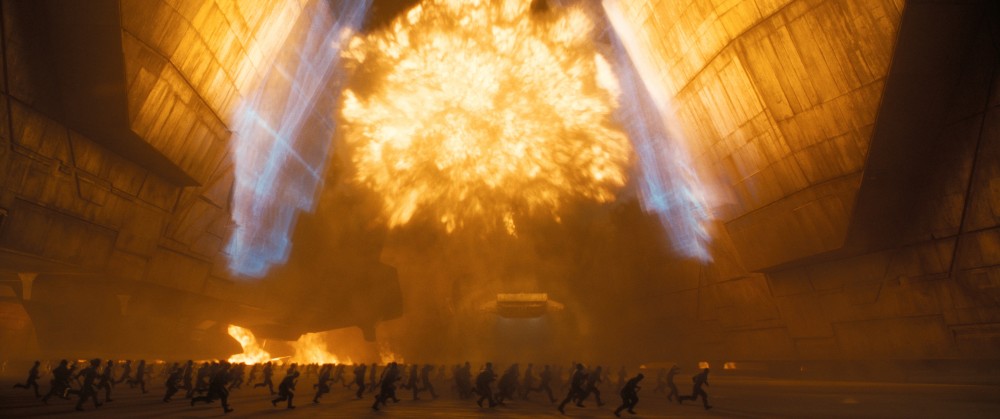
BTL: Dune ends with a battle sequence that draws a half-dozen story lines together over an entire city. Can you talk about orchestrating that?
Walker: That’s in the editing, but it’s also in the planning, I think. There are great advantages to the fact that some of those big sets are real, not CG. The scale of those massive carpets and huge solid doors give a sense of the weight of the building, the planet, the environment on these vulnerable little characters walking around.
We had quite a few options earlier in the film to set up, where the different parts of the city were. Even if you didn’t know the city that well, you knew that over there was a landing strip and over here was a spice refinery. It had all been laid out during the balcony scene earlier. So you have this sort of sense of the distance between things, and then it was honestly a combination of planning and cutting and recutting.
Some scenes were left pretty much the way they were two or three days after they were first cut. But we spent lavish amounts of time on finessing things pertaining to Paul’s inner journey, such as the tent scenes where Paul has a disturbing vision of a holy war. There’s so much impact you can have by changing a take. Incidentally, that run of scenes was shot so that one thing happened and then another, but we intercut the scenes. Two things happen at the same time, like you’re patting your head and rubbing your tummy in narrative terms. In our cutting room, we call that “General Shang-ing the hell out of it” after a sequence in Arrival.
Luckily, the pandemic, I have to say, was kind to us, gave us a little bit of more time.
Dune is now playing in theaters nationwide, as well as streaming on HBO Max.
All photos courtesy Warner Bros. Pictures.

